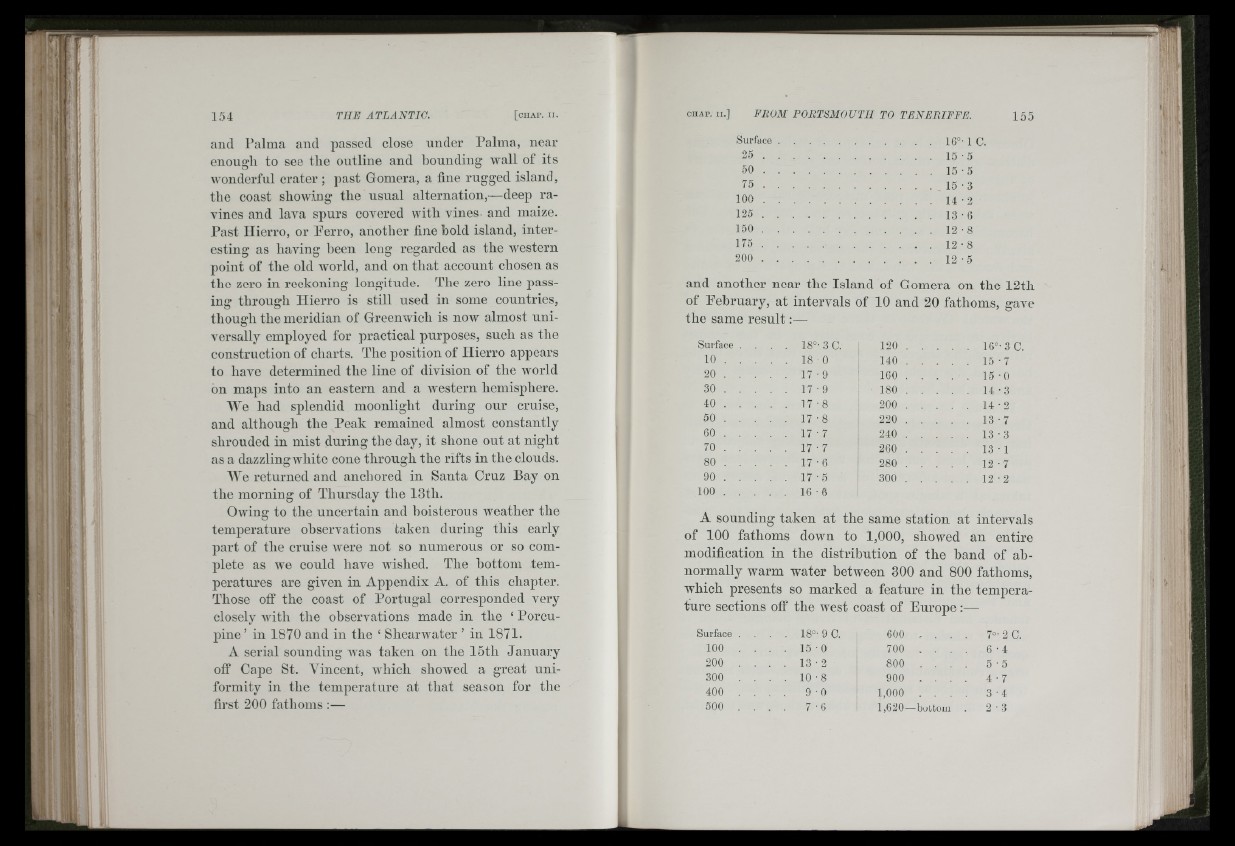
t
1
and Palma and passed close under Palma, near
enough to see the outline and hounding wall of its
Avonderful crater ; past Gomera, a fine rugged island,
the coast shoAving the usual alternation,—deep ravines
and lava spurs covered with vines- and maize.
Past Hierro, or Perro, another fine hold island, interesting
as having heen long regarded as the Avestern
point of the old Avorld, and on that account chosen as
the zero in reckoning longitude. The zero line passing
throu2:h Hierro is still used O O in some countries,
thouffh the meridian of GreeuAvich is now almost uni-
versally employed for practical purposes, snch as the
construction of charts. The position of Hierro appears
to have determined the line of division of the Avorld
on maps into an eastern and a western hemisphere.
We had splendid moonlight during onr cruise,
and although the Peak remained almost constantly
shrouded in mist during the day, it shone ont at night
as a dazzlingAvliitc cone through the rifts in the clouds.
We returned and anchored in Santa Cruz Bay on
the morning of Thursday the 13tli.
OAving to the uncertain and boisterous Aveather the
temperature observations taken during this early
part of tlie cruise Avere not so numerous or so complete
as we could have Avished. The bottom temperatures
are given in Appendix A. of this chapter.
Those off the coast of Portugal corresponded very
closelv Avith tlie ohservations made in the ‘ Porcu- V
pine’ in 1870 and in the ‘ ShearAvater ’ in 1871.
A serial sounding Avas taken on the 15th January
off Cape St. Vincent, Avhich showed a great uniformity
in the temperature at that season for the
first 200 fathoms :—
S u r f a c e .............................. ........................16°-1C.
2 5 .................................... ........................15-5
5 0 ................................... ........................15-5
75 . . . . . . . ........................15-3
1 0 0 ................................... ........................14- 2
1 2 5 .................................... ........................13-6
1 5 0 .................................... ........................1 2 - 8
1 7 5 .................................... ........................1 2 - 8
200 .................................... ........................12- 5
and another near the Island of Gomera on the 12th
of Eebruary, at intervals of 10 and 20 fathoms, gave
the same result:—
Surface
10 .
20 .
30 .
40 .
50 .
60 .
70 .
80 .
90 .
100 .
18° 3C. 120 . . . . . 16°-3 C.
18 0 140 . . . . . 15-7
17 9 ' 160 . . . . . 15- 0
17 9 180 . . . . . 14-3
17 8 200 . . . . . 14-2
17 8 220 . . . . . 13-7
17 7 240 . . . . . 13- 3
17 7 260 . . . . . 13-1
17 6 280 . . . . . 12-7
17 5 300 . . . . . 1 2 -2
16 6
A sounding taken at the same station at intervals
of 100 fathoms down to 1,000, shovA^ed an entire
modification in the distribution of the band of abnormally
warm water between 300 and 800 fathoms,
which presents so marked a feature in the temperature
sections off the west coast of Europe :—
Surface . . . 18°- 9 0. 600 . , . . 7°- 2 C.
100 . . . . 15- 0 700 . . . . 6 -4
200 . . . . 13-2 800 . . . . 5 -5
300 . . . . 10-8 900 . . . . 4 - 7
400 . . 9 - 0 1,000 . . . . 3 -4
500 . . 7 - 6 1,620—boLtoui 2 -3